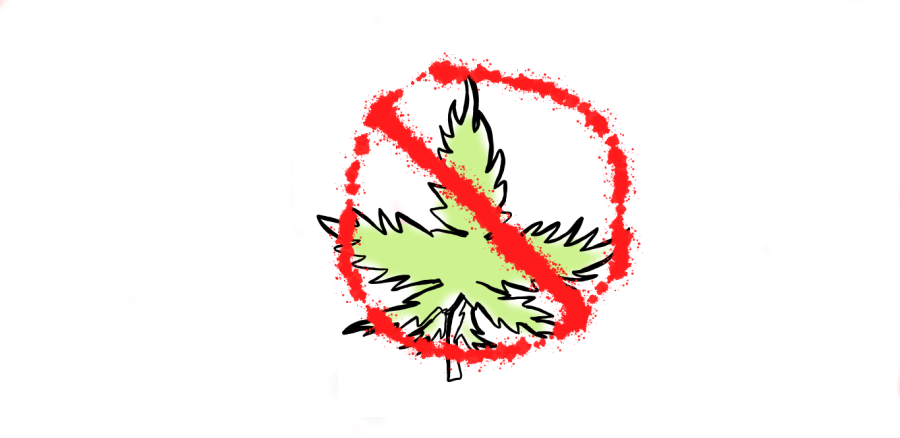Marijuana use and teenagers
April 20, 2022
Nearly 50 million Americans over the age of 13 have used marijuana in the last year according to the 2019 National Survey on Drug Use and Health, (NSDUH), making it the most common drug used in the United States. With the decriminalization of marijuana becoming more common across the United States, many students are finding themselves confused when it comes to their specific state’s policy.
In the state of Illinois, adults over the age of 21 are permitted to have and use up to 30 grams of marijuana for recreational purposes, while minors and those under the age of 21 are prohibited from possessing or consuming any amount of marijuana in any form. If a minor were to be found under the influence of marijuana, they would usually be fined $100-$200, but will not face any criminal charges. While this is Illinois’s state policy when it comes to marijuana use, school districts are given the liberty to implement their own policies.
According to the the school handbook, DGS has a zero-tolerance policy when it comes to marijuana or similar drugs. Possession of marijuana or similar products can lead to a 10-day suspension, referral to a Student Assistance Program Coordinator, police consequences and potential arrest. DGS’s Associate Principal Dr. Karen Taylor explains this process in more in-depth
“DGS takes drug offensives very seriously. There are an infinite number of types of situations, so it is difficult to describe what each course of discipline would look like, but it would always involve a dean interviewing the student, in order for them to have due process. The dean would contact the School resource officer who is an officer from the Downers Grove Police Department, and then they would take it from there,” Taylor said.
Taylor claims DGS’s decision to fortify its drug policy came from the discovery that more and more teenagers are choosing to use marijuana. Cases of drug use among teenagers have been on the rise over the past five years. Marijuana consumption in young teenagers has increased by 23% since 2016 and similar drug use has increased up to 37%. A study conducted in 2018 discovered that those who use marijuana as teens can be up to three times more likely to develop substance abuse problems later in their life.
“There are a host of health and wellness impacts from the use of marijuana. As for school, marijuana use is often correlated with lower grades, poor attendance, withdrawal from sports and extracurricular activities, and decreased motivation and can lead to other negative behavior choices; it’s something that we are working very hard to prevent,” Taylor said.
Other studies conducted in early 2020 found that marijuana usage can lead to memory loss, difficulty learning and lower impulse control. A similar study found that teenagers who regularly consume marijuana perform on average lower in school than those who do not. DGS’s Gina Benge, a working interventionist, is no stranger to these statistics and is dedicated to helping students.
“[DGS is] continually dedicated to protecting and teaching their students from and about the potential dangers of marijuana use. It’s unfortunately very often we see grades, attitude and behavior all be negatively effected by marijuana use and we encourage anyone who knows or is battling with addiction to reach out,“ Benge said.




